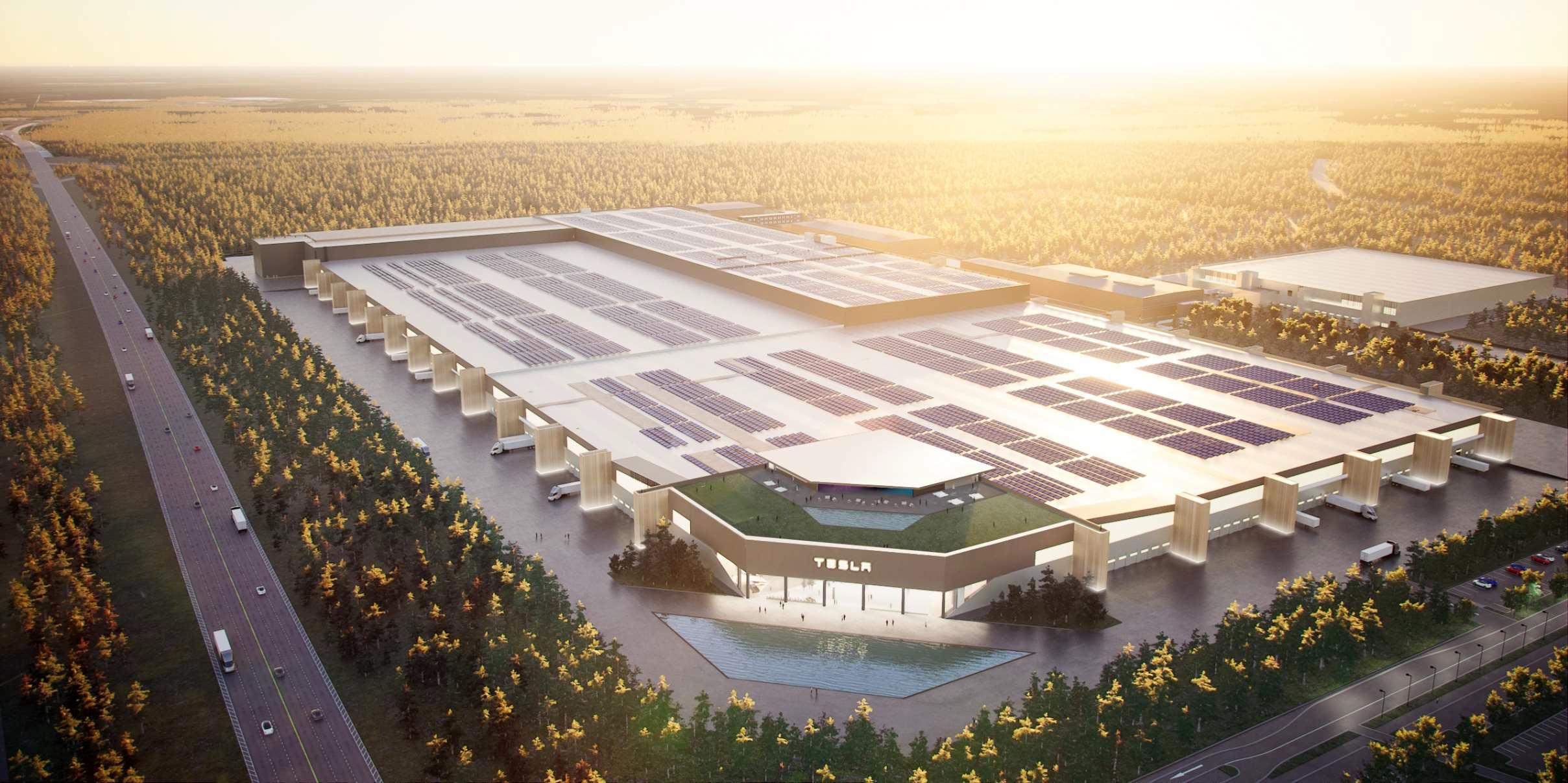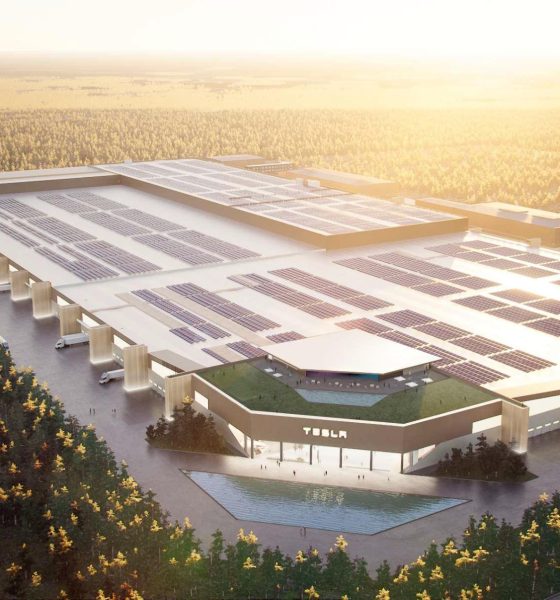Tesla’s Giga Berlin production facility will revolutionize the electric automaker’s presence in the highly-concentrated European electric vehicle market. While Tesla holds considerable advantages in EV tech, pricing, range, and performance, it holds another considerably important element that determines a company’s ability to control pricing: battery production. With Tesla planning to manufacture its newly-detailed 4680 cells at the Berlin Gigafactory within two years, according to Economy Minister Jörg Steinbach, the company is setting the stage to infiltrate the intensely-competitive European EV market with the best and most affordable electric cars on the continent in record time.
After being approved for a slice of the $3.5 billion assistance package for the development of Giga Berlin’s 4680 battery plant, Tesla is set in a prime position to dominate the European battery production market. CATL and BASF SE both have large-scale battery manufacturing projects in Germany already, but Giga Berlin’s plant could displace them as Elon Musk once said it could be the biggest in the world.
During the 2020 European Battery Conference in November 2020, Musk said:
“I think it will be the largest. It would be capable of over 100 GWh hours per year of production and then possibly going to 200 to 250. I’m pretty confident at that point it would be the largest battery-cell plant in the world.”
And Tesla will need it. After coming off of a record year in deliveries and production figures, Tesla is continuing to ramp scalability as it tackles international markets for the first time in its history. After expanding to China with its Giga Shanghai plant, which began delivering cars in January 2020, Tesla had already started developing the Giga Berlin property by excavating the grounds and clearing obstacles that were there previously. Now, the factory is well underway and is expected to begin producing cars this Summer.
There still is no exact timeline for the 4680 battery plant, as it could take several years to figure out supply chain details from suppliers to Berlin. Tesla is also still figuring out the manufacturing processes of the 4680 cell at its Kato Road facility in Northern California. Elon Musk has said in the past that 4680 cells have been in working vehicles for some time, but at what scale? Only Tesla knows.
However, Jörg Steinbach, a vocal supporter of Tesla’s Berlin facility, now says the plant could open in two years, Bloomberg reported.
ALSO READ:
Tesla’s monster 4680 battery plant in Giga Berlin receives federal gov’t pre-approval
Despite regular hurdles to jump through, Tesla has had assistance from politicians all over Germany. With Steinbach’s support, another Economic Minister, Peter Altmaier, also extended his hand to the electric automaker, offering any help he can to expedite the factory’s construction. Environmental concerns, along with complaints from local citizens, have tied up Tesla from time to time at the factory. Still, construction has been moving along at an impressive rate since the official groundbreaking.
“You have to sometimes translate the culture of our approval procedures, which are also strongly influenced by environmental protection,” Steinbach said.
It is crucial for Tesla to open Giga Berlin so it can expand its outreach in the most EV-concentrated region on Earth. Steinbach says he is “totally relaxed” regarding the plant’s ultimate approval. He still expects EVs to roll off the line in July.
After the 4680 cell plant does open, Tesla will be able to scale-back costs of its EVs. Currently buying many cells from third-party suppliers, Tesla will still do that for the foreseeable future, according to Musk. However, creating more battery cells will decrease the shortage of batteries, making them less expensive and, at the same time, decreasing the price of Tesla’s cars. Because of this important point, the 4680 facility is of utmost importance.
“This project is given top priority,” Steinbach said.

Elon Musk
Starlink passes 9 million active customers just weeks after hitting 8 million
The milestone highlights the accelerating growth of Starlink, which has now been adding over 20,000 new users per day.

SpaceX’s Starlink satellite internet service has continued its rapid global expansion, surpassing 9 million active customers just weeks after crossing the 8 million mark.
The milestone highlights the accelerating growth of Starlink, which has now been adding over 20,000 new users per day.
9 million customers
In a post on X, SpaceX stated that Starlink now serves over 9 million active users across 155 countries, territories, and markets. The company reached 8 million customers in early November, meaning it added roughly 1 million subscribers in under seven weeks, or about 21,275 new users on average per day.
“Starlink is connecting more than 9M active customers with high-speed internet across 155 countries, territories, and many other markets,” Starlink wrote in a post on its official X account. SpaceX President Gwynne Shotwell also celebrated the milestone on X. “A huge thank you to all of our customers and congrats to the Starlink team for such an incredible product,” she wrote.
That growth rate reflects both rising demand for broadband in underserved regions and Starlink’s expanding satellite constellation, which now includes more than 9,000 low-Earth-orbit satellites designed to deliver high-speed, low-latency internet worldwide.
Starlink’s momentum
Starlink’s momentum has been building up. SpaceX reported 4.6 million Starlink customers in December 2024, followed by 7 million by August 2025, and 8 million customers in November. Independent data also suggests Starlink usage is rising sharply, with Cloudflare reporting that global web traffic from Starlink users more than doubled in 2025, as noted in an Insider report.
Starlink’s momentum is increasingly tied to SpaceX’s broader financial outlook. Elon Musk has said the satellite network is “by far” the company’s largest revenue driver, and reports suggest SpaceX may be positioning itself for an initial public offering as soon as next year, with valuations estimated as high as $1.5 trillion. Musk has also suggested in the past that Starlink could have its own IPO in the future.
News
NVIDIA Director of Robotics: Tesla FSD v14 is the first AI to pass the “Physical Turing Test”
After testing FSD v14, Fan stated that his experience with FSD felt magical at first, but it soon started to feel like a routine.

NVIDIA Director of Robotics Jim Fan has praised Tesla’s Full Self-Driving (Supervised) v14 as the first AI to pass what he described as a “Physical Turing Test.”
After testing FSD v14, Fan stated that his experience with FSD felt magical at first, but it soon started to feel like a routine. And just like smartphones today, removing it now would “actively hurt.”
Jim Fan’s hands-on FSD v14 impressions
Fan, a leading researcher in embodied AI who is currently solving Physical AI at NVIDIA and spearheading the company’s Project GR00T initiative, noted that he actually was late to the Tesla game. He was, however, one of the first to try out FSD v14.
“I was very late to own a Tesla but among the earliest to try out FSD v14. It’s perhaps the first time I experience an AI that passes the Physical Turing Test: after a long day at work, you press a button, lay back, and couldn’t tell if a neural net or a human drove you home,” Fan wrote in a post on X.
Fan added: “Despite knowing exactly how robot learning works, I still find it magical watching the steering wheel turn by itself. First it feels surreal, next it becomes routine. Then, like the smartphone, taking it away actively hurts. This is how humanity gets rewired and glued to god-like technologies.”
The Physical Turing Test
The original Turing Test was conceived by Alan Turing in 1950, and it was aimed at determining if a machine could exhibit behavior that is equivalent to or indistinguishable from a human. By focusing on text-based conversations, the original Turing Test set a high bar for natural language processing and machine learning.
This test has been passed by today’s large language models. However, the capability to converse in a humanlike manner is a completely different challenge from performing real-world problem-solving or physical interactions. Thus, Fan introduced the Physical Turing Test, which challenges AI systems to demonstrate intelligence through physical actions.
Based on Fan’s comments, Tesla has demonstrated these intelligent physical actions with FSD v14. Elon Musk agreed with the NVIDIA executive, stating in a post on X that with FSD v14, “you can sense the sentience maturing.” Musk also praised Tesla AI, calling it the best “real-world AI” today.
News
Tesla AI team burns the Christmas midnight oil by releasing FSD v14.2.2.1
The update was released just a day after FSD v14.2.2 started rolling out to customers.

Tesla is burning the midnight oil this Christmas, with the Tesla AI team quietly rolling out Full Self-Driving (Supervised) v14.2.2.1 just a day after FSD v14.2.2 started rolling out to customers.
Tesla owner shares insights on FSD v14.2.2.1
Longtime Tesla owner and FSD tester @BLKMDL3 shared some insights following several drives with FSD v14.2.2.1 in rainy Los Angeles conditions with standing water and faded lane lines. He reported zero steering hesitation or stutter, confident lane changes, and maneuvers executed with precision that evoked the performance of Tesla’s driverless Robotaxis in Austin.
Parking performance impressed, with most spots nailed perfectly, including tight, sharp turns, in single attempts without shaky steering. One minor offset happened only due to another vehicle that was parked over the line, which FSD accommodated by a few extra inches. In rain that typically erases road markings, FSD visualized lanes and turn lines better than humans, positioning itself flawlessly when entering new streets as well.
“Took it up a dark, wet, and twisty canyon road up and down the hill tonight and it went very well as to be expected. Stayed centered in the lane, kept speed well and gives a confidence inspiring steering feel where it handles these curvy roads better than the majority of human drivers,” the Tesla owner wrote in a post on X.
Tesla’s FSD v14.2.2 update
Just a day before FSD v14.2.2.1’s release, Tesla rolled out FSD v14.2.2, which was focused on smoother real-world performance, better obstacle awareness, and precise end-of-trip routing. According to the update’s release notes, FSD v14.2.2 upgrades the vision encoder neural network with higher resolution features, enhancing detection of emergency vehicles, road obstacles, and human gestures.
New Arrival Options also allowed users to select preferred drop-off styles, such as Parking Lot, Street, Driveway, Parking Garage, or Curbside, with the navigation pin automatically adjusting to the ideal spot. Other refinements include pulling over for emergency vehicles, real-time vision-based detours for blocked roads, improved gate and debris handling, and Speed Profiles for customized driving styles.










